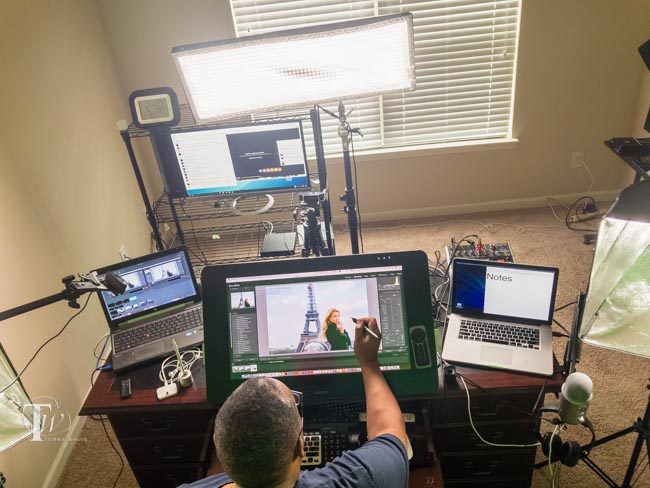
Live streaming has become a big part of my life. So much so that it’s actually a major part of my day job. I stream live Adobe tutorials regularly to YouTube, Facebook and Twitter/Periscope. I spent most of 2016 streaming to Twitch.tv. Since this is what I do for a living I wanted to have high production values.
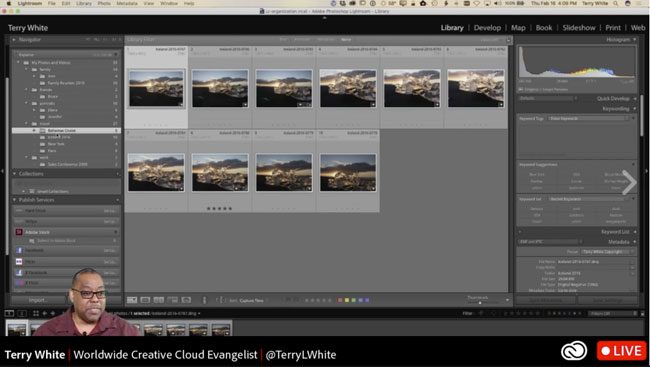
Therefore I setup a dedicated live streaming studio in my home. Being a photographer I’ve setup a few photography studios and no matter how you equip your studio you can always find more gear that you want and ways to improve it. I’ve been building out this live streaming studio since May 2016. I have everything I “need” to do my streams, but I’m always looking out for ways to improve upon what I have.
Like a photography studio, your streaming setup can be very basic or very elaborate
My live streaming studio #theta360 – Spherical Image – RICOH THETA
The above 360° image was captured with a Ricoh Theta S 360 attached to this monopod with feet.
If someone asked me what they needed for a photography studio I would say: you need a camera and a light source. Those are the minimum requirements to a photography studio. From there it’s a matter of adding the things you want/need to allow you to take better pictures or work more efficiently.
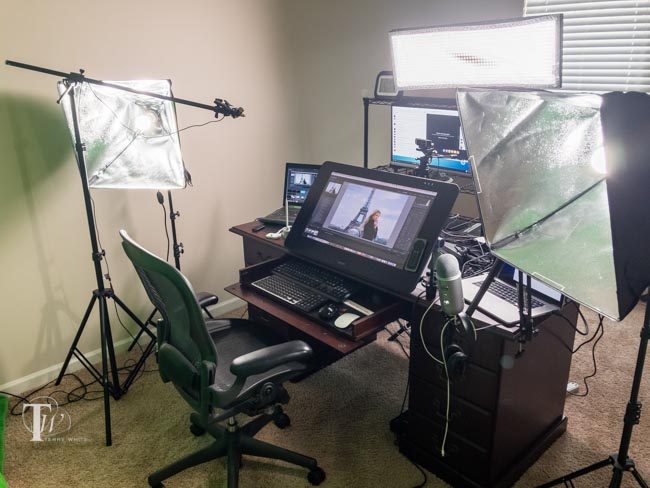
The same goes for a live streaming setup. You would need a computer and a decent internet connection (5mbps up/down minimum). You can add a USB mic for better audio. You can add an external webcam for better video. So on and so on. If I only streamed occasionally then I probably would have a more basic setup. However, since I do this daily for work I wanted to have the best setup I could do.
I don’t have a staff or crew
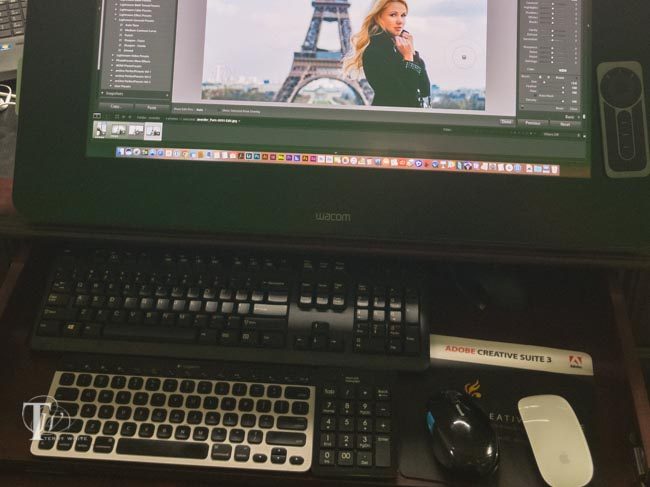
Since I’m usually doing my streams solo that means that I have to have all the controls within arms reach. I have to start and stop my own streams. I do my own switching. This means not only being the on camera talent, but also being the camera operator and control room operator. If you have an assistant then your setup can be more spread out. Using the keyboards and mice above I control three different computers (1 Mac, 2 PCs). I explain their purposes in a moment now and the rest of my setup now…
What’s in my Live Streaming Studio and why?
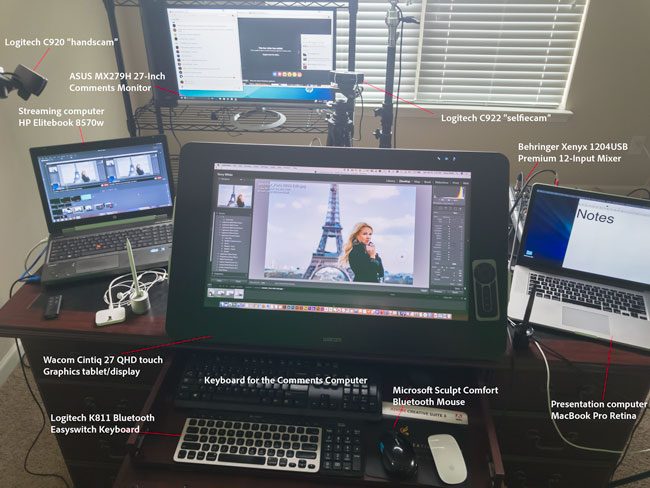
You’ll need a computer: To live stream from a desktop/laptop computer you’ll need either a Mac or PC. I prefer using a Mac for my demos and tutorials. I use a 2014 MacBook Pro 15″ Retina. For a basic setup you can certainly do it all from one computer. When I started streaming I did everything from the one computer. However, I then found out quickly that running the streaming software and outputting an HD stream AND trying to run applications like Photoshop CC were a bit too much. I decided that a two computer setup was the best way to go. I could run the streaming software on one computer and my MacBook Pro would then run at full speed for the demos. Unfortunately if you plan to do a two computer setup, your streaming computer will still need to be a pretty fast system too. Honestly, if you plan to stream at 1080p or even 720p you’ll want an Intel core i5 processor minimum. I really recommend a Mac/PC with a quad core Intel core i7 processor and a decent video card. My streaming computer (the one that runs the streaming software) is a 2012 HP Elitebook 8570w running Windows 7 Pro 64. This system is certainly not new by any means, but it has 32GB of RAM and enough horsepower to run my streams with ease.
You will want a second monitor or video capture card: Like I said above you can certainly stream with one computer. If you do, I strongly recommend at least attaching a 2nd display. Since you’ll likely be sharing your desktop on the stream you’ll want to put the window for the streaming software on the 2nd display so that it doesn’t show on your stream. This doesn’t have to be a fancy monitor. Virtually any display will do. If you want a two computer streaming setup like the one I use then you’ll need a video capture card so that you can take the video out from your presentation/demo computer and see it/capture it on the streaming computer.
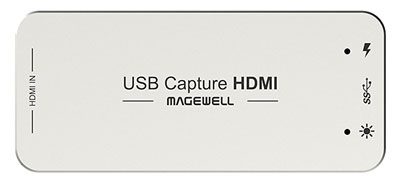
I use a USB 3 Magewell HDMI Capture Card. This card works natively on Mac or Windows. It has HDMI in and USB 3 out. I have an HDMI cable connected to the HDMI out on my MacBook Pro and into the Magewell. This card is definitely not cheap, but it works very well and is natively supported with no drivers needed. If your streaming computer has a Thuderbolt port then you can use a less expensive card like the Blackmagic UltraStudio Mini Recorder
. The Blackmagic solution works great!
You’ll need streaming software
There is a very good solution used by thousands of streamers every day. It’s called OBS (Open Broadcaster Software). Best of all it’s FREE. You can run OBS on your presentation/demo computer, but as I said above I recommend running it on a separate computer. It’s available for Mac, Windows and Linux. You can download OBS Studio here. To help you get started I’ve recorded this series of videos on setting up and using OBS to stream to the 4 most popular platforms:
While OBS is definitely a capable solution I prefer to use Wirecast 7 Pro Mac
| Win
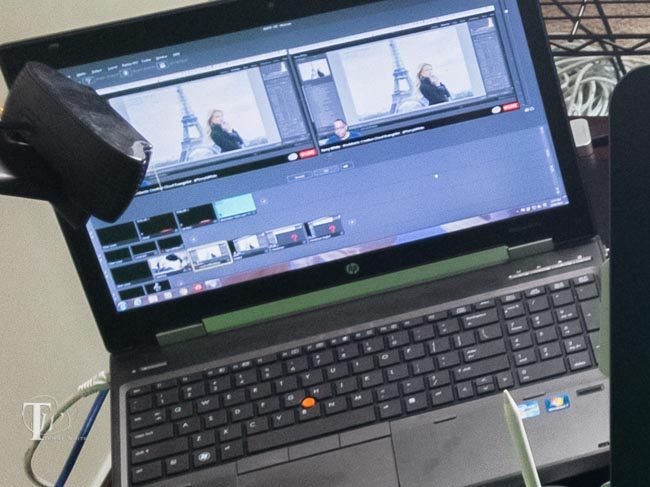
With Wirecast I can stream to multiple platforms at the same time and it has several other professional features that I want to implement as time goes on.
Cameras
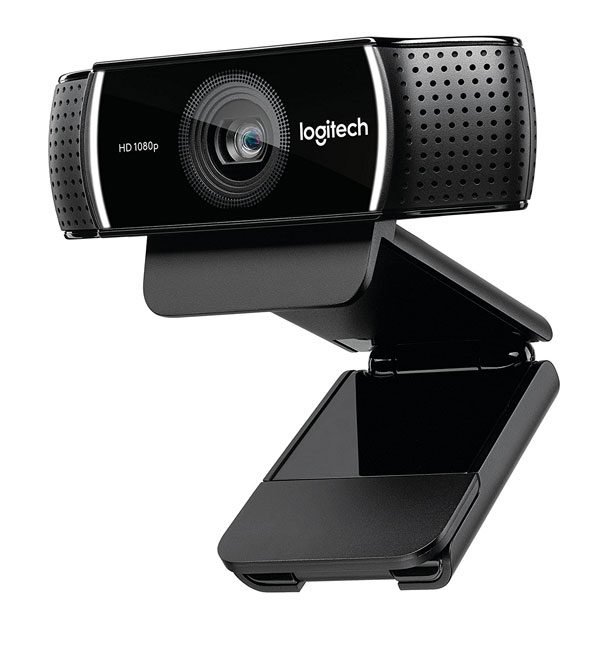
One of the benefits of streaming from a desktop/laptop computer is that you can use other cameras besides the webcam that’s built-in to your laptop. You can basically use any camera that you can get attached to your computer. My main camera is currently a Logitech C922 mounted on a RetiCAM tabletop tripod
. (I refer to it as the “selfiecam” in my setup). I love the quality of this camera. You can use webcams, video cameras or even your DSLR. Using a webcam is easier because you’ll just plug it into an available USB port.
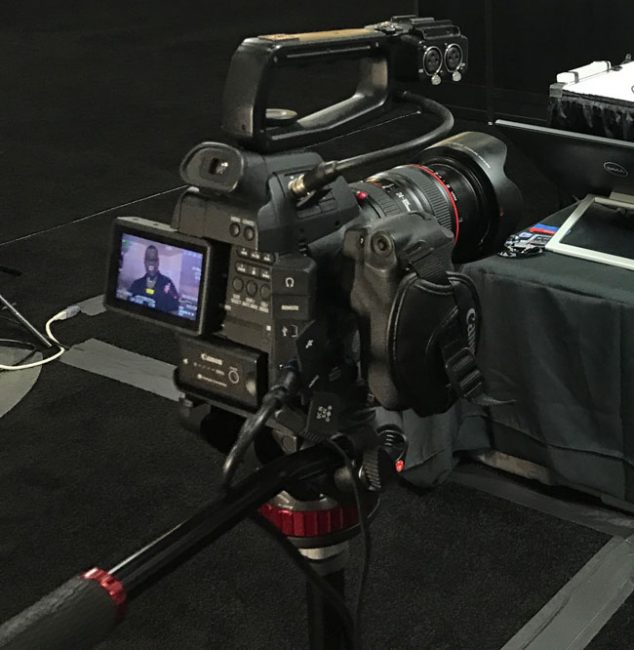
However, if you want to use a more pro level camera then you’ll need another video capture card like the Magewell or Blackmagic UltraStudio Mini recorder
like I mentioned above. If I needed shallow depth of field then I’d definitely consider switching to a traditional video camera or DSLR with clean HDMI out.
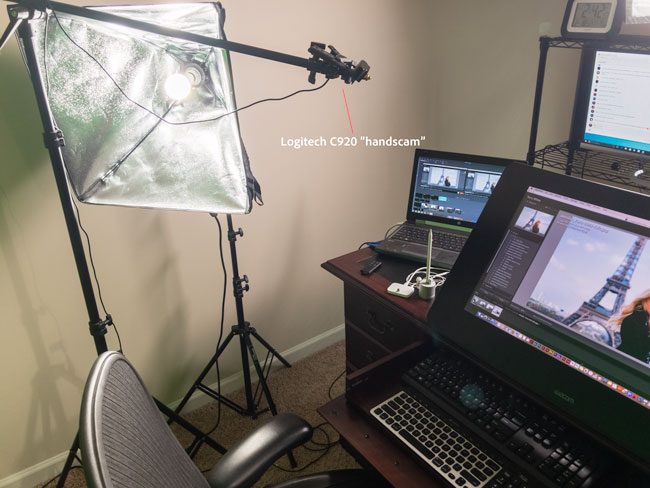
I use a second camera. A Logitech C920 as a “handscam”. This camera is mounted on a reflector holder/stand so that I can point it down at my hands. This cam is used anytime I need to show my brush strokes on my Cintiq 27 QHD touch
graphics tablet or the gestures on my iPad Pro with Apple Pencil.
Let’s talk audio
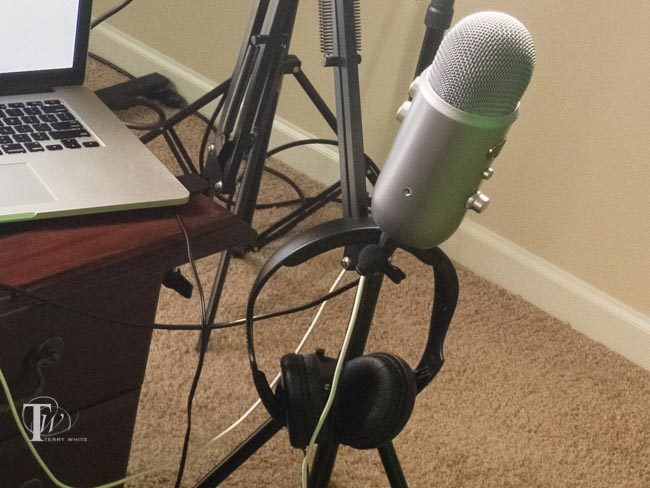
They say that people will tolerate bad video, but they will absolutely NOT tolerate bad audio. I highly recommend that you use an external microphone. The one built-in to your computer will work in a pinch, but it won’t be the best quality. The best rated USB microphone is the Blue Yeti microphone. I’ve used this mic for over a year with great results and no complaints.
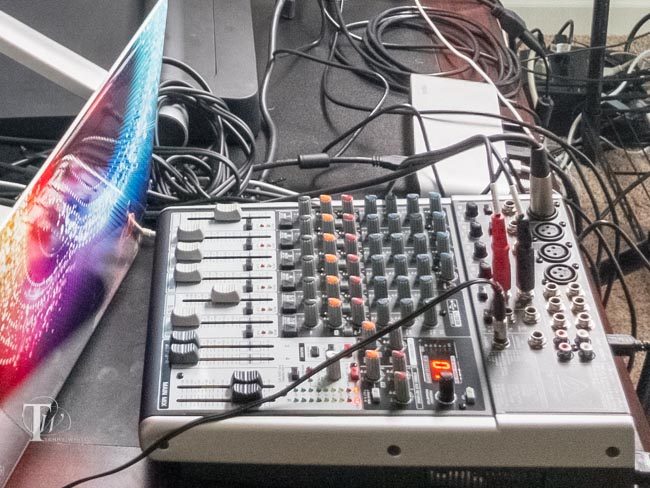
Taking it up a notch: A USB mic will handle capturing your voice for your streams and that’s great. However, if you want to be able to bring in other sound sources and use other/professional microphones then you might consider adding a USB mixer. I recently added a Behringer Xenyx 1204 USB premium to my streaming studio. This mixer allows for up to 12 different inputs. I also invested in a Shure MX184 Condenser Microphone – Super Cardiod lavaliere
.
The benefit of using a lav mic is that you don’t have to worry about it obstructing the view of your onscreen talent/guests. Since I’m using a separate computer running the streaming software I have the mixer plugged into that computer. This means that audio coming from my Mac or iPad has no way to get into my streams without the mixer. This is crucial if you want to show off anything that has audio in it. Now that I have the mixer and the Shure lave mic the Blue Yeti is currently on used as a backup and is currently unplugged.
Lighting and green screens

I have three lights in my setup. The main light is the one directly in front of my desk above. It’s a Westcott Flex 1′ x 2′ Daylight Mat. I love the light quality that I get from this mat and the fact and the intensity can be adjusted with a dial. The other two lights light me from the side and mainly the green screen behind me. This is all sold as a kit: Westscott uLite Green Screen Photo Lighting Kit. This kit comes with the two lights, stands and the green screen. The only thing I added was a backdrop stand to hold up the green screen. Having a green screen allows me not only the ability to put whatever scene or video I want playing behind me, but more importantly it allows me to knock out my background so that when my talking head appears above the software I’m showing, there is no background to see. This of course is not required, but takes things up a notch.
Other gear to consider
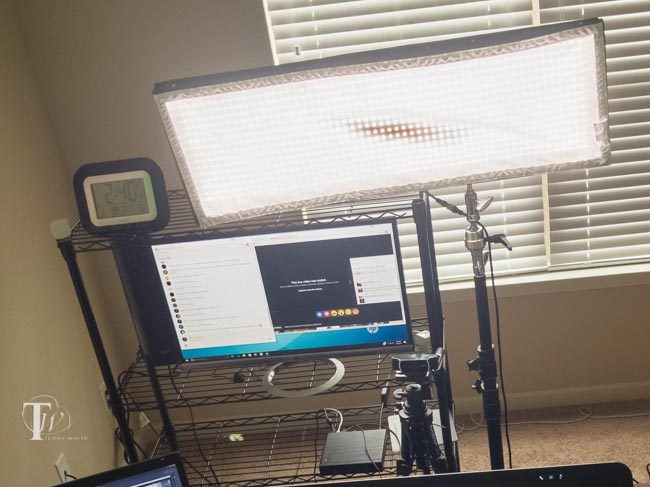
As I’ve said all along, you can have a very basic setup or you can have a very elaborate one. The stuff I listed above are what I considered to be the minimum requirements for the kind of studio I wanted to create. However, as always you can have less or more and still do a great job streaming. Here are a few more (optional) items in my setup:
Run everything on Ethernet and plug everything into a UPS: While it’s possible to stream over WiFi, having an ethernet connection to your router is faster and less prone to disconnects while streaming. My streaming studio has an ethernet drop in it that runs to my server closet and an ethernet switch inside. I also have everything plugged into a UPS backup system
as I did have the power go out once during a stream. The power outage only lasted a few seconds, but I was able to keep right on going.
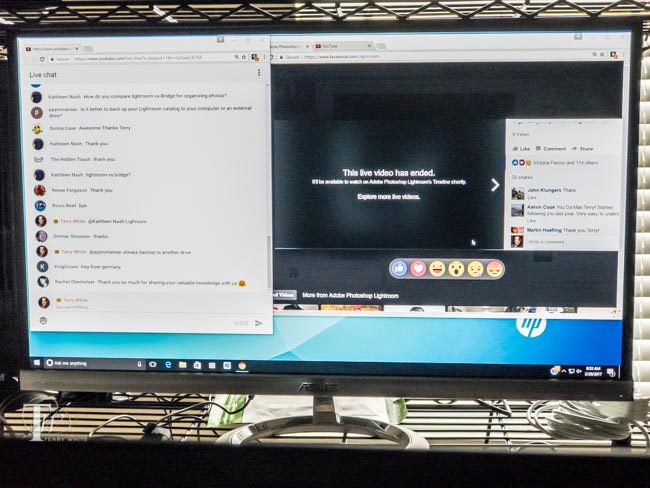
I have a separate “live chat/comments computer”. This is probably the most optional piece of gear in my setup. However, it’s very nice to have. It’s an HP mini desktop computer running Windows 10. I think I got it refurbished for about $250. At the time I thought it might be good as a streaming computer, but it just wasn’t fast enough. However, as a computer to show all the live chat comments during my stream it works perfectly. I have a 27″ Asus monitor connected to it and it’s on a stand right behind the Logitech C922
“selfiecam”. This means that when I look up at the camera to address my live audience I just look slightly to the left to see their comments on a nice big readable display. This does NOT need to be a separate computer. I could attach this display to my streaming computer and run the comments in a browser window from that computer too. However, I had the extra computer just sitting there so I used it.
A clock: Yep just a simple digital clock that will help you stay on time. I also use my favorite timer app on my iPhone that sits in a dock next to my Cintiq.
What’s next?… I can always think of more things to add. I’d love to have sound proofing panels on all my walls. Perhaps a “I’m Live” light above the door outside the room? A remote control camera crane/jib for my main camera would be nice too for a sweeping opening. I could go on and on, but I think you get the point. It never ends!
The Bottom Line
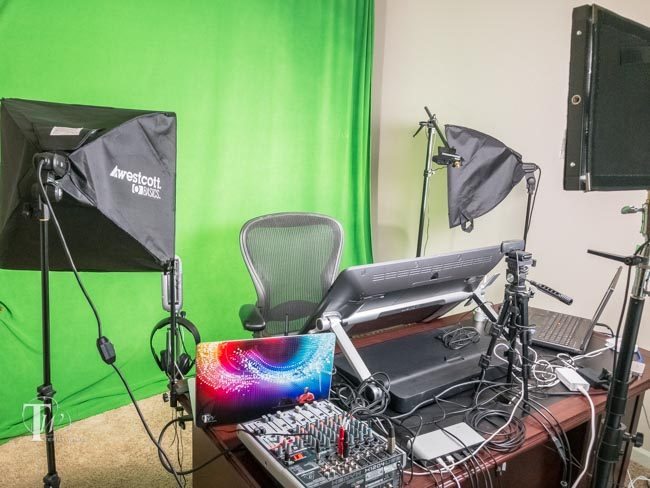
Live streaming from your desktop can open up a whole new world and way to make professional presentations to your social media following. I enjoy talking with many of you on a regular basis. You can catch me LIVE on the Creative Cloud YouTube channel and the various Adobe product Facebook Pages: Lightroom, InDesign, Adobe Spark, Adobe Stock, Adobe Muse and others. Of course you can also see my live streams on my YouTube channel, Facebook Page and Periscope/Twitter feed. Be sure to subscribe/like the pages above to be notified as to when I’m live.
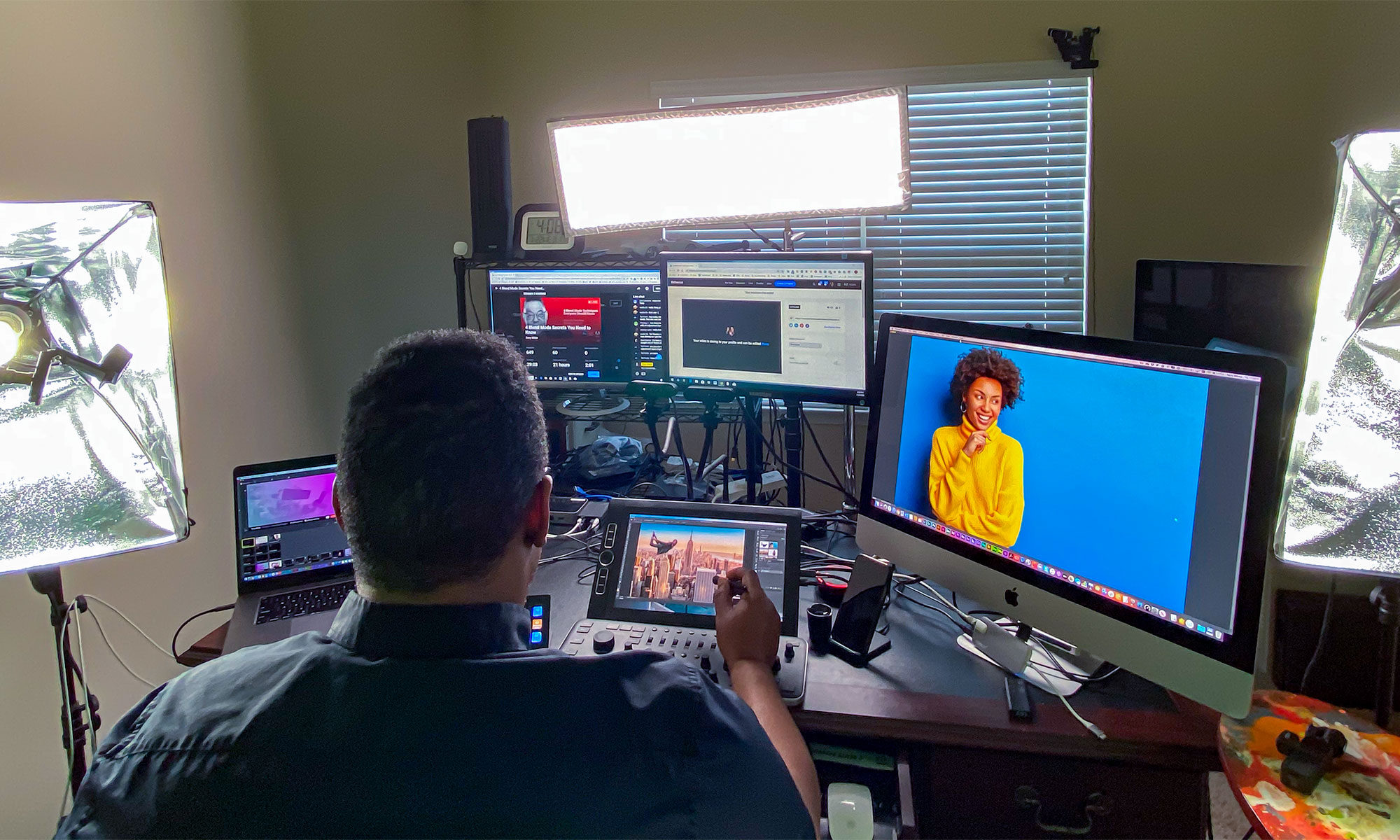

Wow, really thorough overview. Thanks for doing all that and putting in all the links – a good setup like this looks like it’s a lot less expensive than I thought. Link in tomorrow’s ResearchBuzz. Thanks!
You’re welcome and thanks for sharing!
Thank you for sharing this wonderful information. This information helpful and useful for people. Good explanation for live streaming studio set up and for that step by step explanation in detail.
You inspire me everyday …I will be reading this again and again to keep me focused…
Cheers
What if you want to watch a game being played in another room? We have a network cable that is there and power, what would you recommend for hardware setup so someone could broadcast live action about the game being played without the players hearing the commentary?
Terry, this is a wonderful show of what a streaming studio/room can be. From basic to more fancy. I have been broadcasting now for ten years. Started in 2008 on BlogTV it’s no longer a site sadly. I was on most all of the broadcasting sites. I remember when Twitch was only an idea, then it became real. Back then I could not for the life of me get my stream to work. When I highlight my studio and it is in its own portable building people are constantly surprised at how little overall it cost me to set up. It’s just a matter of reusing things, finding what you really need. Making it work, and as you can add those wanted things. Over the next 22 months I will go from using a Phenom iix4 830 CPU purchased a week after it hit the market. It can handle 480 just fine. 720 I can run but all process cycles are in use then. I have a Radeon HD 6970 gpu also bought soon after it came out. As for ram I have 16gb. I can DJ, use most any program I wish, and even play Assassins Creed IV Black Flag edition at the highest settings with zero problems streaming to any site at 480.
My upgrade will be an X399 Motherboard, Radeon RX Vega 64, 3 256gb M.2 SSD chips., 2 16GB Ram chips 3200 or 3600 mhz., A accelerator card for the 3D programs I like to use, and for other non GPU and more CPU intense processes, to wrap it all up a Threadripper 16 core CPU with an all in one liquid cooler. I already a case Corsair Air 540, and a wonderful 750w PSU.
I contacted both Intel with my idea for a solid streaming machine and was already decked out to get the Intel set up… Intel told me I would be much better off using ATI/AMD for my particular build as they provide the best streaming possibilities.
So I looked into the AMD option and you see what I found. AMD suggested I can also use a different GPU the RX 580. A decent card, and may be my option x 2 of them to get better performance.
It is possible as you mention to run an all in one machine. Like the one I use now, I plan to use it until it can’t keep up with my broadcast needs. This time I am going to use it for at least 10 years.
I really like the use the of laptops and extra monitors you have going. I will be sending people to this page/site to look at your article to share the love and information.
I go by AbiliTV Broadcasting (AbiliTV) no relation to the AbiliTV LLC site… I am also on Twitch not making a living at this, but living the best I can enjoying the people I meet.